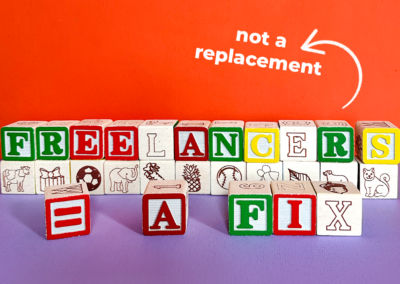As I approach one full year in COVID19-related lockdown, it’s certainly been a year of change and adjustment for me, but I was already working at home 100% of the time before the pandemic. My significant other, however, works for a very big company, and one that seemed to prize and prioritize in-office work vs. remote work. Yet they too have been home working every single day since March 16, 2020.
Even as so many companies have demonstrated that they can accommodate 100% remote work, some CEOs proclaim that they believe remote work negatively impacts innovation. They can’t wait to bring employees back, saying that teamwork and innovation, and productivity just aren’t the same remotely. Netflix’s Reed Hastings is one of the most prominent critical voices out there, but he’s not alone.
Without fail people like Hastings and JP Morgan CEO Jamie Dimon mention serendipitous hallway conversations and the energy of being in rooms face to face with your colleagues as mandatory factors for great innovation.
Build Businesses Back Better
While it’s clear that teamwork and innovation are not the same, many companies have had banner years. Companies have managed to scale to reach insanely increased demand from newly house-bound workforces and student bodies. Companies have released new hardware, software, apps, services, and business models. Even global trade and production, after a temporary near-shut-down in Q2, 2020, figured out how to come back and get back on track by the end of the year. So maybe instead of trying to make teamwork and innovation the same, companies need to focus on how to make it better.
Why is there a disconnect to begin with? Why would companies lump innovation and productive teamwork in with any other logistical challenge and expect it to be solved with higher speed bandwidth or more Slack channels? Likely, the disconnect comes from the same place most corporate disconnects come from…thinking of culture as some kind of standalone, siloed project or initiative, not something baked into the day-to-day operations and innovation.
By urgent and overnight necessity, corporate leaders spent a lot of time in the past several months figuring out working remotely from a logistical perspective -the tools, the technology, the safety protocols required to operate.
I propose that corporate leaders need to spend the next many months figuring out working remotely from a cultural perspective. If companies aren’t prepared to invest the same amount of thinking, research, and budget into their culture as they invested with the logistics, I speculate the culture wasn’t that awesome pre-pandemic.
It’s the perfect time to de-silo culture and values from where many companies have stuck it -as part of a hiring rubric or event, or as a corporate social responsibility initiative. It’s the perfect time to operationalize culture and to recognize that innovation should be joined at the hip with culture in action.
Can You Plan Serendipity?
So, back to those “serendipitous” hallway conversations and the energy of being in rooms face to face. Here are some questions a company should consider about its pre-pandemic culture:
Were the hallway conversations more ritual than serendipity?
People may traverse a circuit when they’re feeling bored or stuck, with the hopes of breaking up the monotony of the workday- however, if the faces they see are always the same, is that really serendipity? Engaging with different people at work creates more of an opportunity to learn, grow and explore on the job.
Were hallway conversations used for quick decision-making, without regard for whether all stakeholders were included?
Excluding stakeholders when making quick decisions can send a message, not only to those stakeholders but to any team member that sees this behavior in action, that their input is not valued. This can easily lead to individuals feeling demotivated and prone to limit future contributions.
Were the feedback loops and processes inherently hierarchical in nature?
Another way to shut down innovation and collaboration is to ignore talented employees who are not considered senior level. This begs the question -how does leadership demonstrate that they value the voices of all employees, no matter their title?
Many companies like to include “diversity of perspective” or a “problem-solving approach” in their list of diverse identities they want to hire for but are they accommodating those different approaches and perspectives once they’re in the door?
If team brainstorms consistently favored the loudest voices or external processors, this is the perfect opportunity to consciously design brainstorming sessions to work otherwise, rewarding a more diverse set of personality types.
Once a company has implemented more technologies, tools, and routines to accommodate non-in-person, non-real-time (i.e. asynchronous) communications, those same tools could be mindfully used to avoid the common cultural missteps and missed opportunities represented above. What better time is there to do so than right now?
Marrying the innovation process with cultural values can enable companies to cleave business decisions from physical locations. That freedom and flexibility aren’t just good for employees. With minor adjustments, it can be just as good for companies and their bottom line.
Elisa Camahort Page is a speaker, consultant, and entrepreneur, best-known for co-founding BlogHer, Inc. She’s the host of The Op-Ed Page podcast and co-author of Road Map for Revolutionaries: Resistance, Activism, and Advocacy for All. Learn more at elisacp.com.
Elisa’s Socials: LinkedIn, Twitter
Editor’s Socials – Asha Atkins: LinkedIn, Twitter, Instagram



